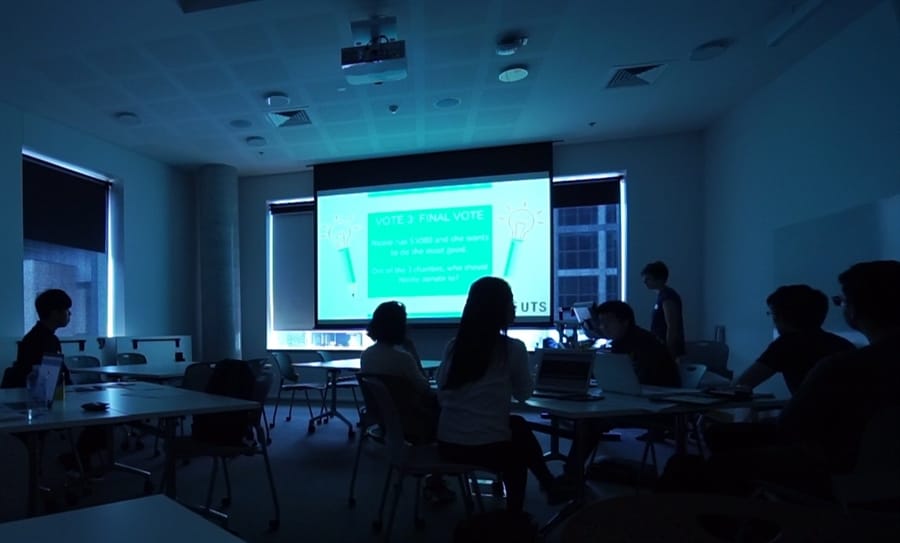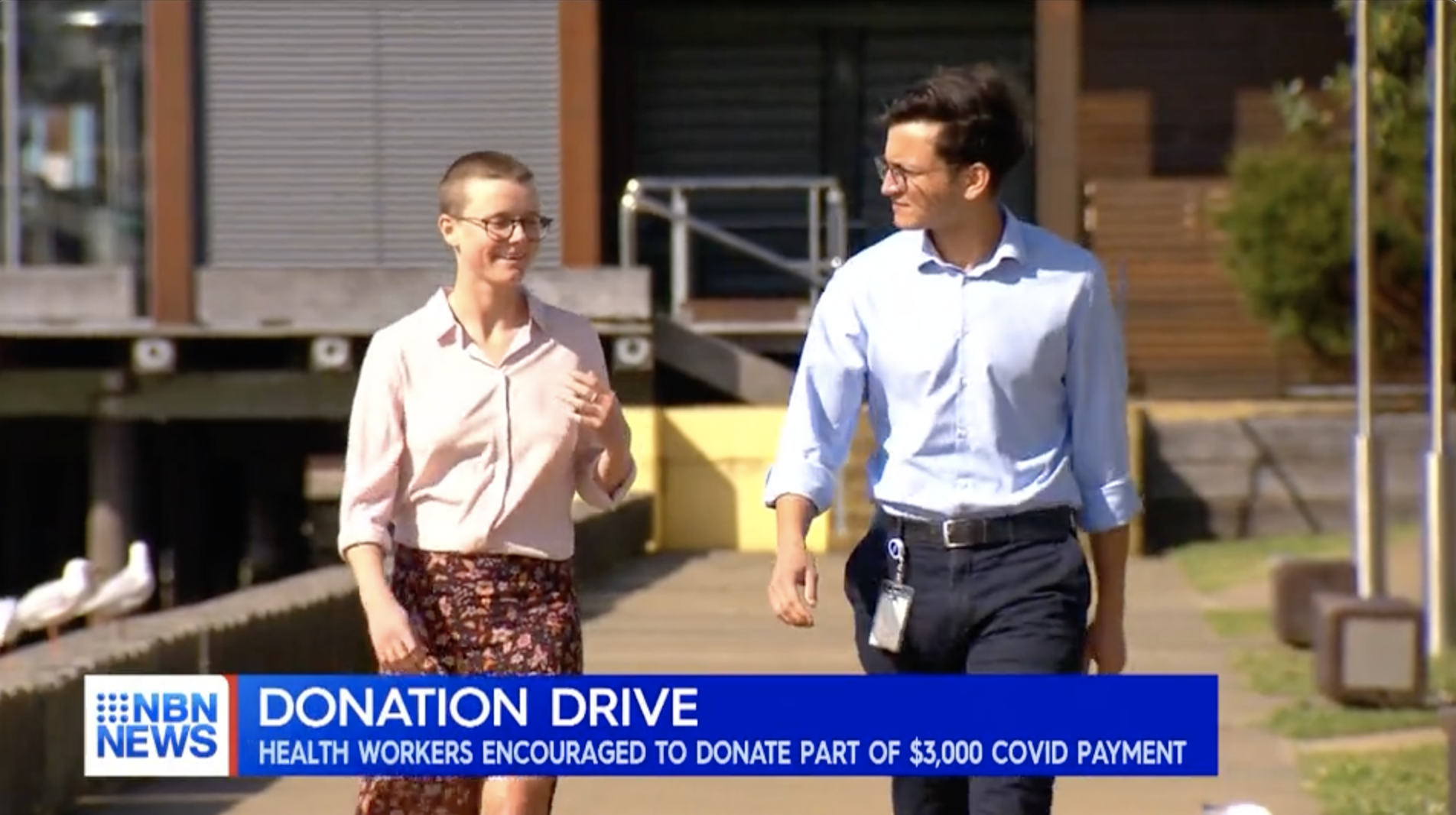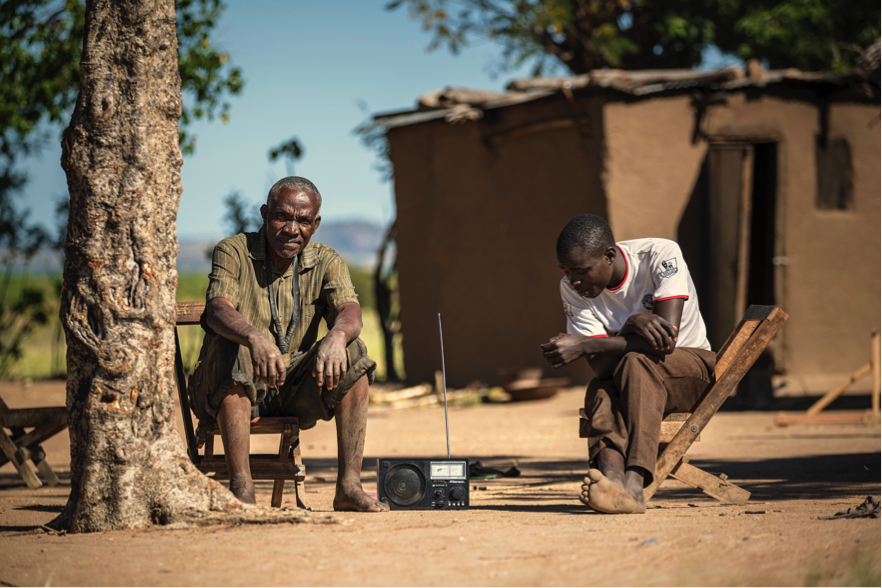Below is a summary of the Altruistic Accounting Report, a detailed impact report prepared by Nicole Sutton of the University of Technology Sydney (UTS). Here Kathryn Mecrow-Flynn, Project Lead of the Giving Game Project, highlights the key results of the first semester incorporating classroom Giving Games into an undergraduate accounting course at UTS. This is a follow up to our posts on the partnership and pilot results.
Background
Last year, the Giving Games Project at The Life You Can Save (TLYCS) partnered with Nicole Sutton and her team at the University of Technology Sydney (UTS), to commence the Altruistic Accounting project. In November 2018, the team conducted a successful pilot with student volunteers. Our previous blog posts, linked in the introduction, go into detail about the Altruistic Accounting project, including the structure and layout of the exercise, and its aims and objectives.
What did the Altruistic Accounting project do?
Nicole and her teaching team ran classroom Giving Games during a weekly undergraduate tutorial class, which focuses on decision processes and biases. The course runs twice a year with a cohort each semester of approximately 300-400 students.
How was the impact of the classroom Giving Game measured?
The criteria used to evaluate classroom Giving Games are:
-
Impact: The Giving Games team outlined our approach to impact at greater depth in “How the Giving Game Project Tracks Its Impact.” In short, we focus on:
-
Changes in attitudes towards giving.
-
Changes in plans or intentions.
-
Money moved to effective nonprofits.
-
-
Effectiveness: How well did the activity perform in the classroom? Did it meet the learning objectives? How well did it communicate the key concepts of the course to students?
-
Perceived value: Did teachers and students find the activity worthwhile and relevant?
To evaluate the impact, effectiveness, and the perceived value of classroom Giving Games, data was collected from the following sources:
-
In-class responses (collected through online polling data during the activity).
-
Student responses to a post-activity questionnaire.
-
Teacher responses to a post-activity questionnaire.
-
Student responses in post-activity interviews.
A total of 172 students provided responses via the in-class polling software and 114 responded in post-activity questionnaires. Unfortunately, due to problems with polling software and survey administration, not all students provided responses to all questions. We will be improving this process for the second Semester. Additionally, 2 students volunteered to be interviewed. Finally, five out of the six teachers who facilitated at least one classroom Giving Game completed a post-activity questionnaire.
What were the results?
1. Impact
a. Changes in attitudes towards giving
The table below shows the results of the classroom Giving Games on students’ attitudes towards donating to nonprofits. This was assessed by asking students before and after the Giving Game to select the most important factor when choosing where to donate. This differs from a standard Giving Game where participants are asked to rank six factors in order of importance.
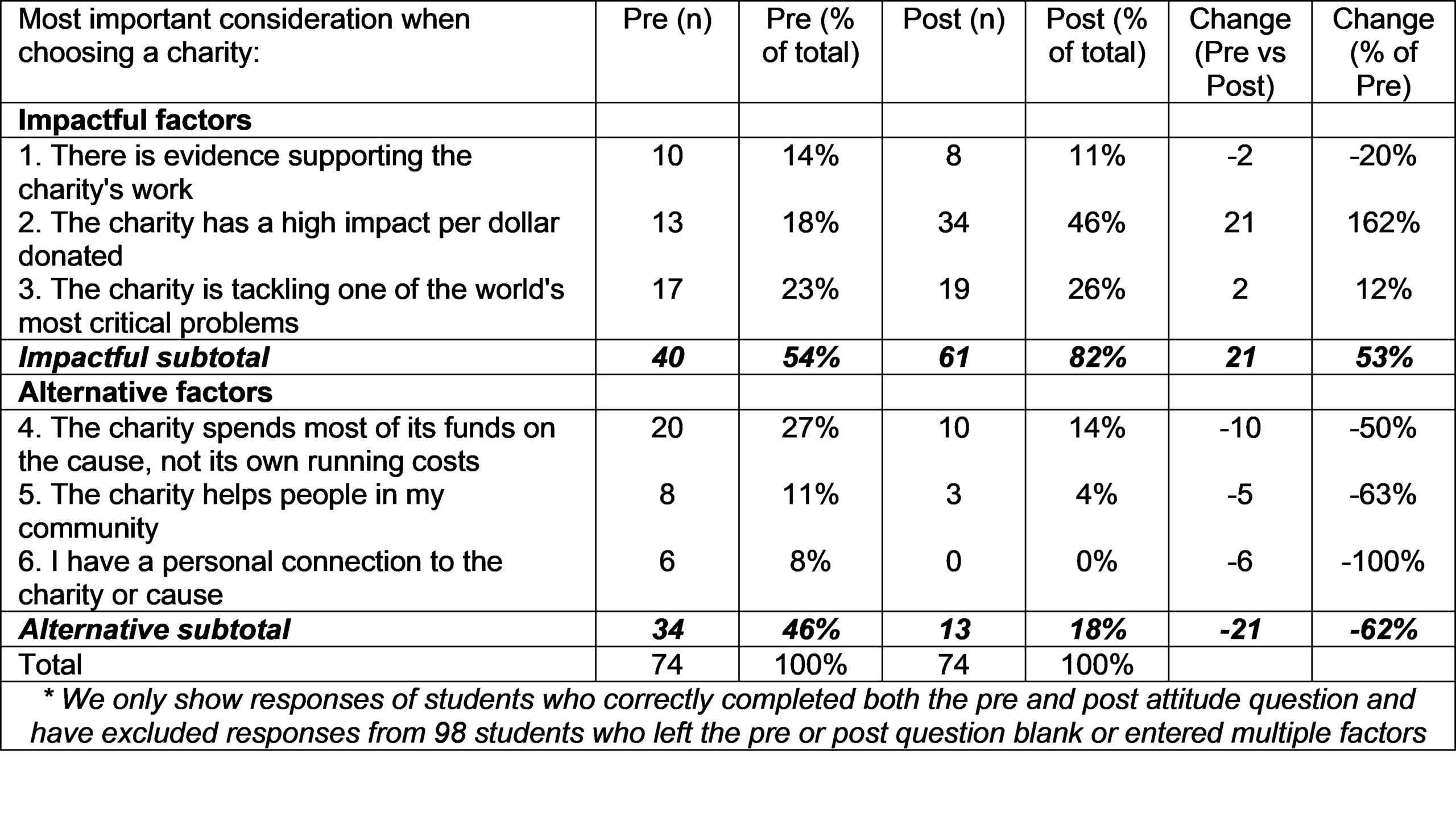
Our results show a significant shift in student’s attitudes, with an increase in the number and proportion of students selecting impactful factors.
b. Changes in plans or intentions
Plan changes were measured through the vote results, reported changes in intentions towards charitable giving and willingness to engage further (i.e. subscription rates).
In terms of voting results, between the first vote and the final vote, there was a strong shift toward high-impact nonprofits (GiveDirectly and the Fred Hollows Foundation). By the final vote, less than 15% selected the low impact option (The Smith Family), a decrease from a third of all votes initially. In addition, 21.6% of all students switched from a low to a high impact charity, substantially more than the 5.2% who switched from a high to low impact option.
In terms of students stated changes in intentions, students reported that they would be more considered in making donation decisions, attempt to be ‘more rational’, redress their own biases, do more research, and reconsider their decision criteria:
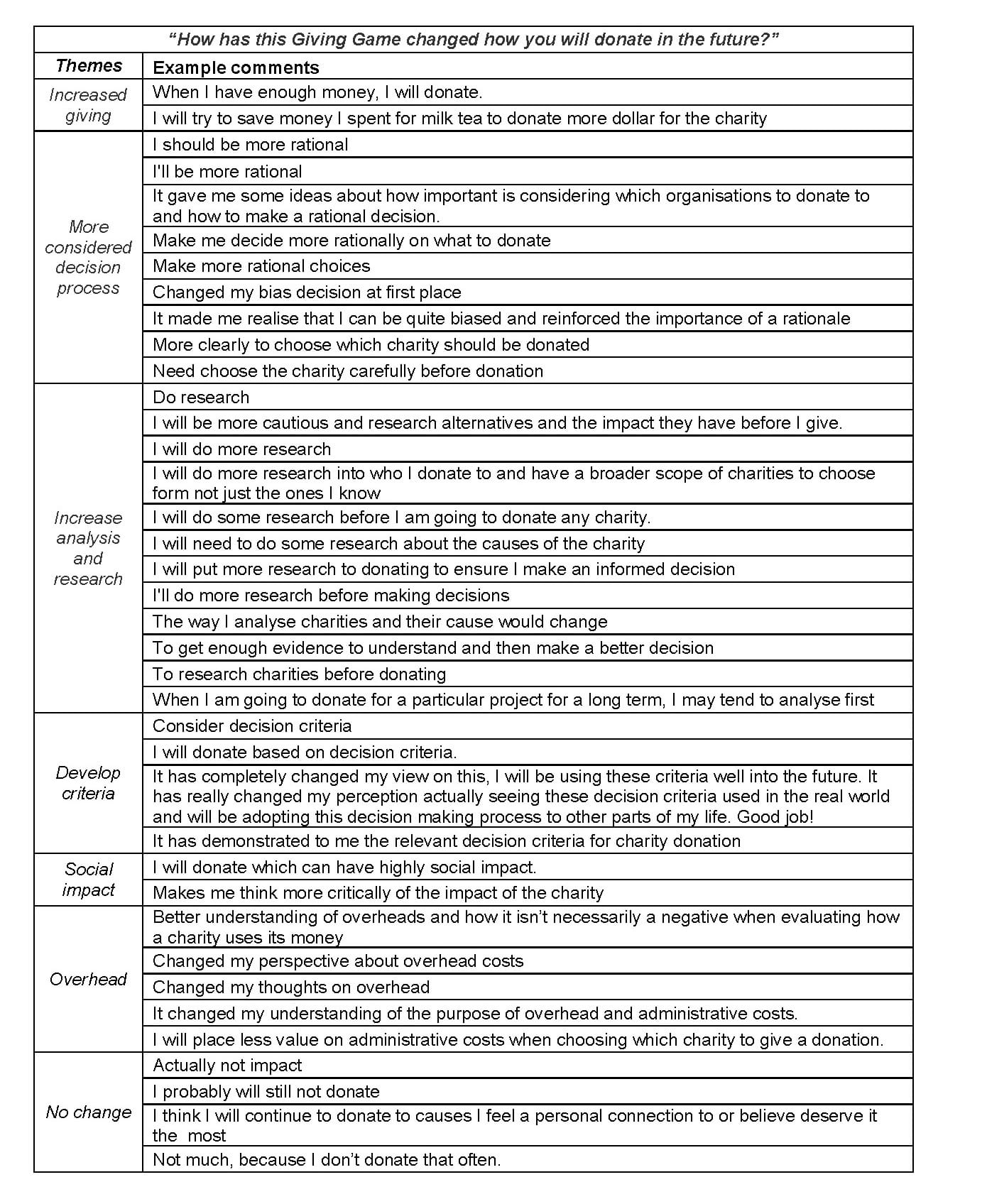
One area of improvement is the relatively low number of students who chose to subscribe to various follow-up newsletters or offers for further information. This would seem to indicate that while they see the overall value of effective giving principles, as yet, they don’t see the relevance of the additional resources offered by the activity. This will be a core focus on improvement in the next semester.

C. Money Moved to Effective Best Charities
As a winner-takes-all-approach was employed, nine classes elected to give $100 to The Fred Hollows Foundation ($900 in total) and one class choose to give $100 to Give Directly. In total $1000 was donated to effective nonprofits by students on behalf of the UTS Business School.
2. Effectiveness
The teachers assessed the Giving Game as highly effective at demonstrating the relevance of accounting to areas of social impact, 4.4 out of 5, “very effective” and “extremely effective”, and to helping students understand decision-making concepts, 4 out of 5, “very effective.” However, the team found that the activity could be improved in terms of how smoothly it ran within the time frame available, and how to ensure a higher consistency in terms of student participation and engagement.
3. Perceived value to teachers and students:
In terms of the quantitative ratings, students scored the classroom Giving Game very highly. When asked how likely students would be to recommend attending a Giving Game to someone they knew, the average score was 7.5 out of 10. This increased to 7.7 when asked about the extent to which future students would find the task valuable. There were very few students who did not find the activity valuable. For example, when asked about the value to future accounting students only 2 students (3% of responders) gave it a rating below 5 out of 10. These results were reinforced by ratings from teachers, who when asked the extent to which they thought future accounting students would find this task valuable, gave a score of 8.6 out of 10.
Where next?
Based on the opportunities identified in these results, in July 2019, The Altruistic Accounting Project was awarded a UTS Social Impact Grant from the UTS Centre for Social Justice and Inclusion, to fund the donations and operational costs for conducting Giving Games at UTS in October 2019. We are incredibly pleased and grateful for this support.
Based on this data, The Giving Games Project and Altruistic Accounting team will work together to leverage the opportunities for improvement identified, specifically improving process effectiveness and subscription rates. We are encouraged by these initial results and cautiously optimistic about the potential for impact created by classroom Giving Games. We will release further data as it becomes available following the second semester.
We wish to applaud Nicole and her team for their hard work, dedication, and commitment, both to introducing hundreds of students to high impact philanthropy and to prioritizing the development of robust impact-tracking.
For any questions, please contact Kathryn Mecrow-Flynn at kathryn@thelifeyoucansave.org.
